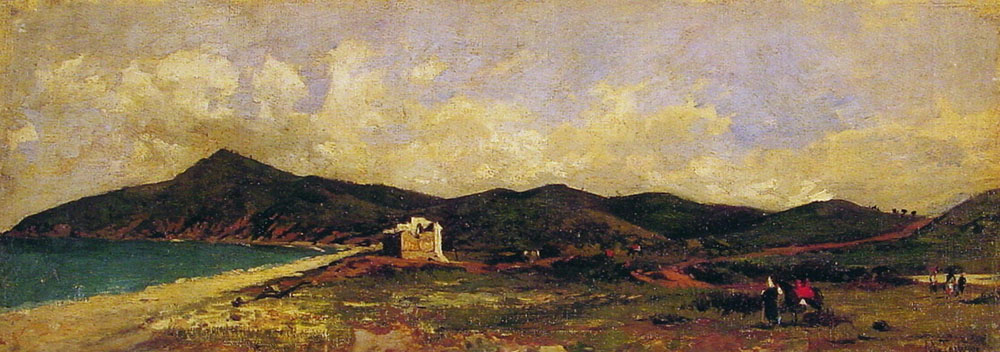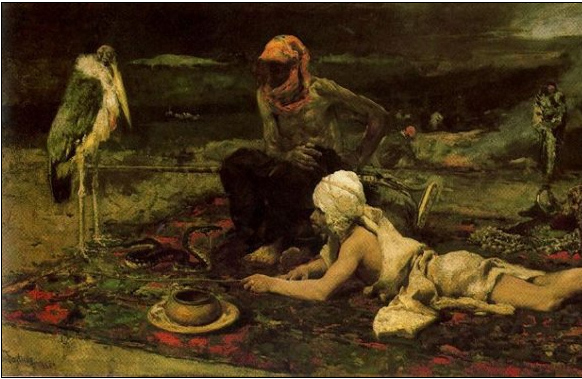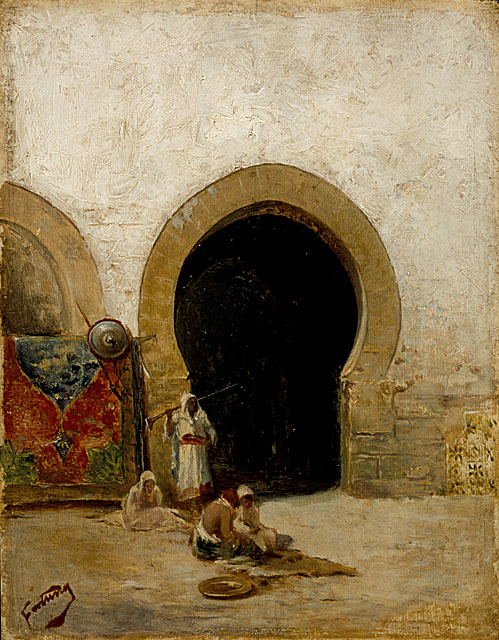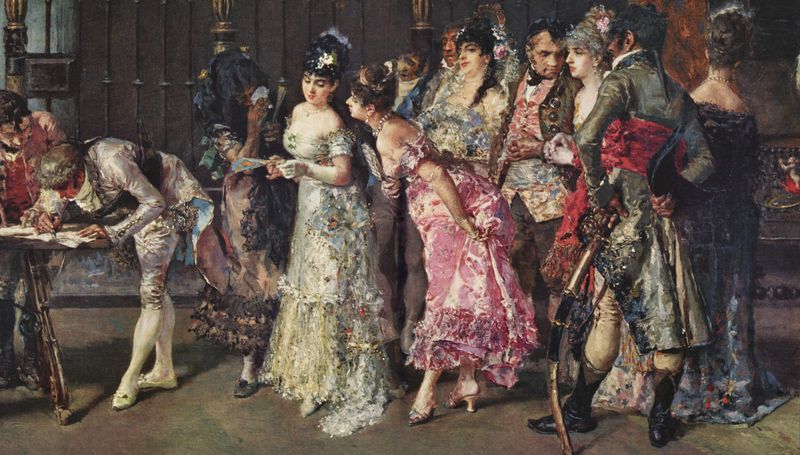
Artist: Mariano Fortuny
Title: At the Viceroys, Detail 1870
Size: 60 x 93.5 cm
Medium: Oil on canvas
Location: Museum del Arte, Barcelona
Spanish Orientalist
Orientalist Paintings and Commentary on Mariano Fortuny Marsal Spanish Orientalist Painter
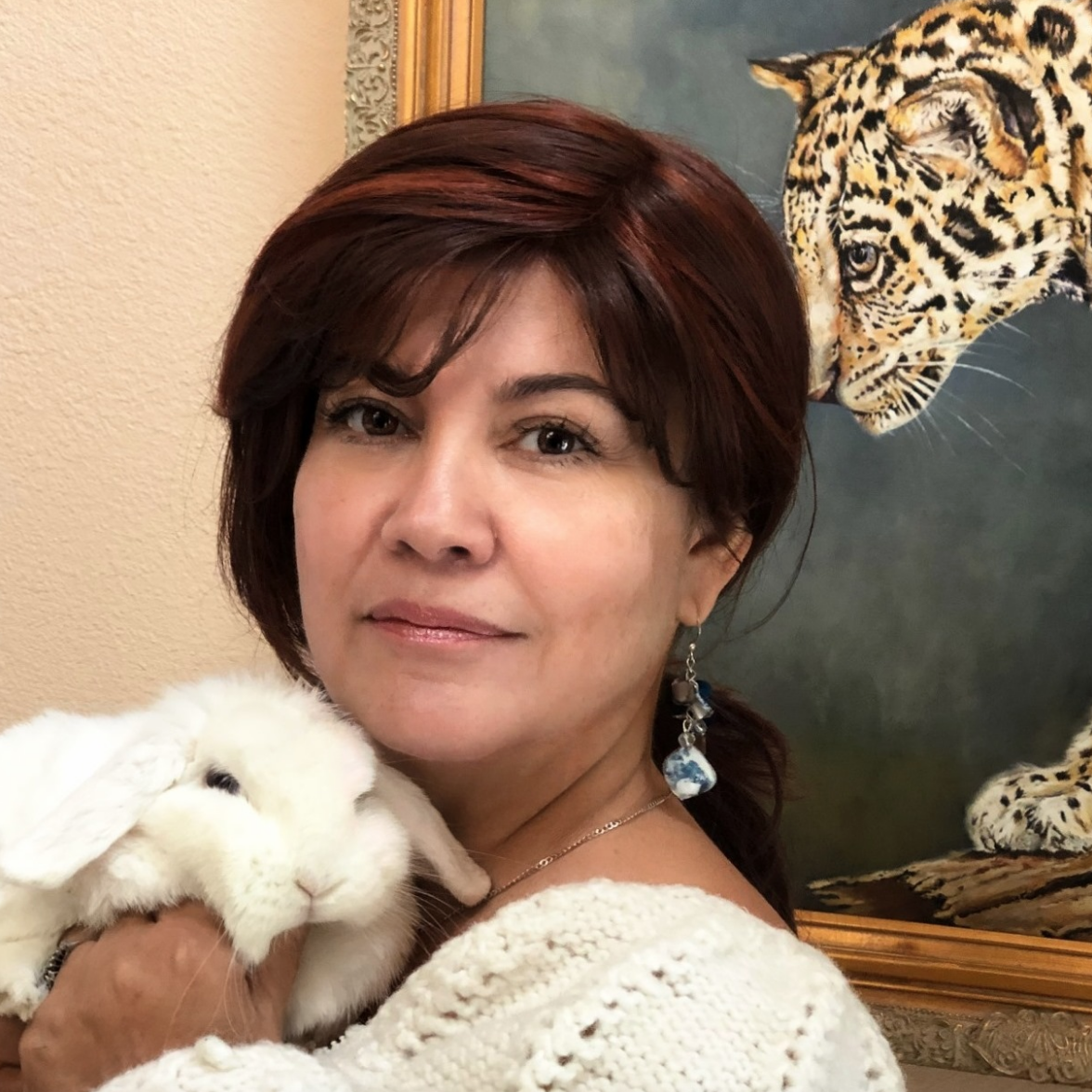
Special Portrait Offer ~ 30% off regular portrait rates
if under deposit before Nov. 30, 2009!
click below to see inventory
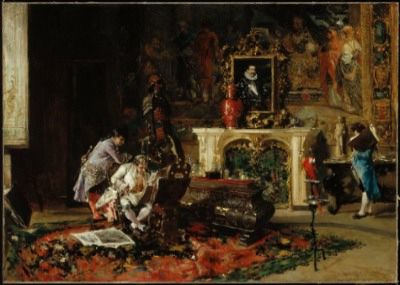 Antiquaries
Antiquaries
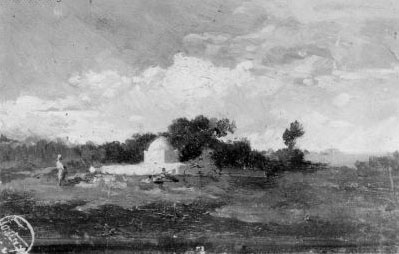 Tomb in North Africa
Tomb in North Africa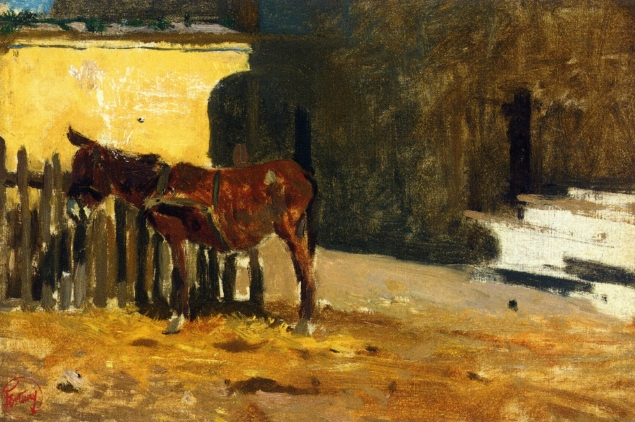 A Burro on the Patio
A Burro on the Patio The Moment of Lecture
The Moment of Lecture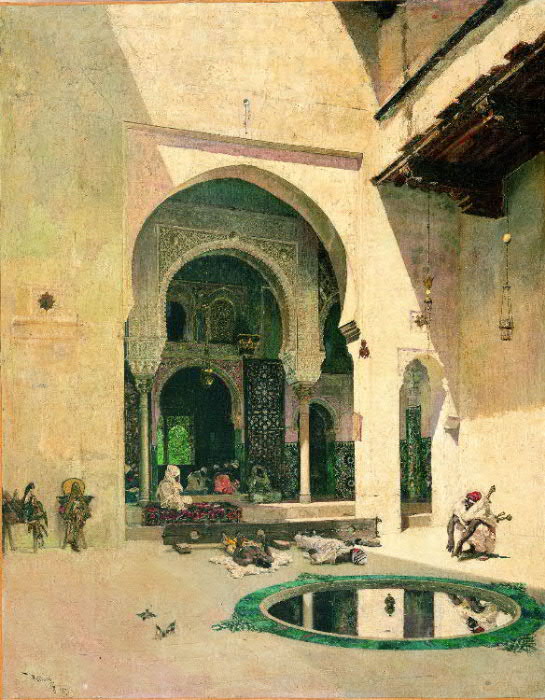
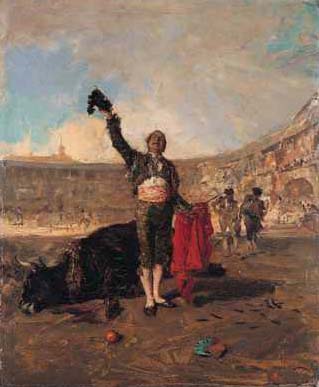 The Bullfighter's Salute
The Bullfighter's Salute
Thought to be the finest Spanish painter of the nineteenth century after Francisco de Goya, Fortuny occupied a prominent place on the art scene of the period. Educated at the Llotja school, he completed his training in Rome on a grant from the Barcelona City Council, an institution which commissioned various works from him about the intervention of Catalan volunteers in the Spanish-Moroccan War that had broken out in 1859. For that reason Fortuny travelled to Tetuan at the beginning of 1860 and to Tangiers in 1862. The final result of the works in Morocco were a brace of unfinished canvases in which he depicted two of the most important clashes of the African campaign. The first, The Battle of Tetuan, a work of great size and in a format totally inhabitual in the artistic praxis of Fortuny, remained in his Rome studio, where it became a true emblem, until it was acquired on the painter's death in 1874 by the Barcelona Provincial Council. The second, The Battle of Wad-ras, is currently to be found in the Museo del Prado.
The fact that Fortuny did not finish The Battle of Tetuan and that the final result was very uneven and somewhat unhappy demonstrates the lack of motivation of the painter, who became increasingly aware that a history painting conceived within the genre's conventional parameters and characteristic stereotypes was at something of a remove from his painterly aspirations and his creative sensibility. On the other hand, notwithstanding the shortcomings of the staging that a grande machine required, the canvas is strangely compelling, given that it contains a visual poetics which paradoxically converts its compositional heterodoxy into one of the artist's chief attainments and merits.Source: National Museum of Art Catalonia
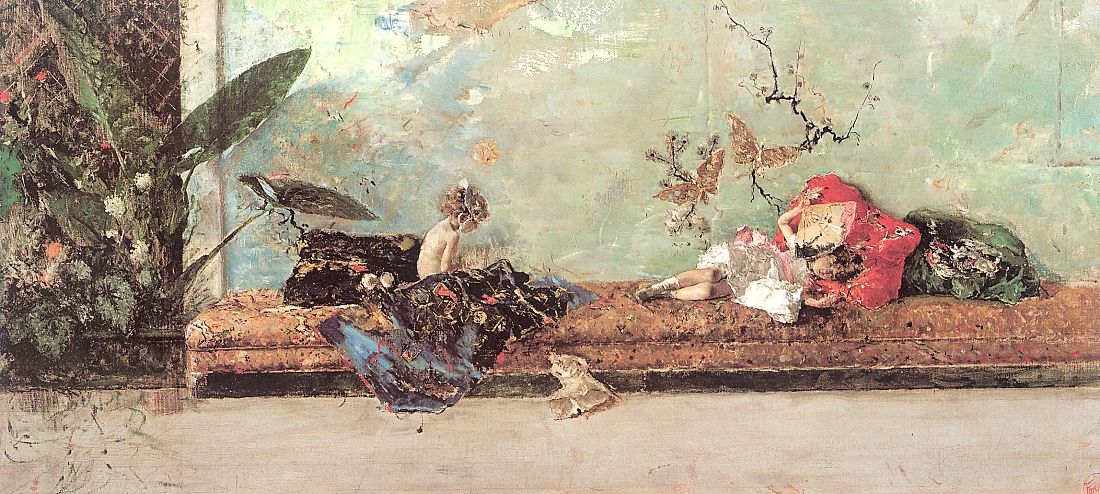 Children in Japanese Hall
Children in Japanese HallThis painting is without doubt a small jewel. Though, because of its size it might be considered a minor work, it is actually one of his most brilliant. The painter, the first Spaniard to become a trully cosmopolitan artist, enjoyed international fame and earned a large number of commissions throughout his short life. However in this small work -Fortuny was certainly a specialist in small fomats- he wasn't working "on commission". He painted it just a few months before he died, never really finishing it, and is a reflection of his search in the last years of his life to find new roads and outlets for his painting. Thus, while some elements of the scene - such as the girl's leg - are perfectly drawn with meticulous detail, other parts of the painting show such loose, separated brush strokes that one might say that this presages Impressionism. The children in the painting are Mariano and Maria Luisa, the product of his marriage to Cecila Madrazo, the daughter of Federico Madrazo. Source: Prado Museum, Madrid
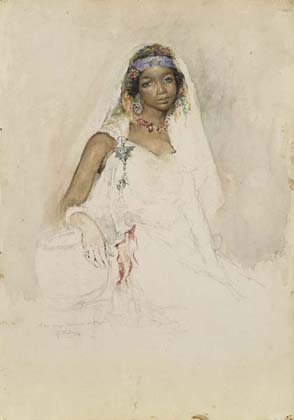
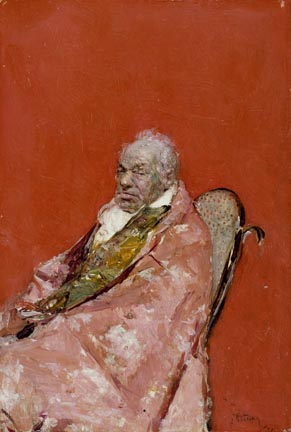
The cosmopolitan Catalan painter visited Paris and London and worked at Portici near Naples during the last year of his life. Fortuny y Marsal's late works reflect an interest in light, a distinctive use of color, and an awareness of current international trends, including the influence of Japanese art on the West. Fortuny y Marsal worked closely with colleagues in Spain, France, and Italy. Not only was he a brilliant technician, but he proved to be remarkably receptive to progressive trends. This expressive image of an ecclesiastic in rose-colored robes posed against a vermilion background, demonstrates Fortuny y Marsal's audacious use of color. Source: The Walters Art Museum
